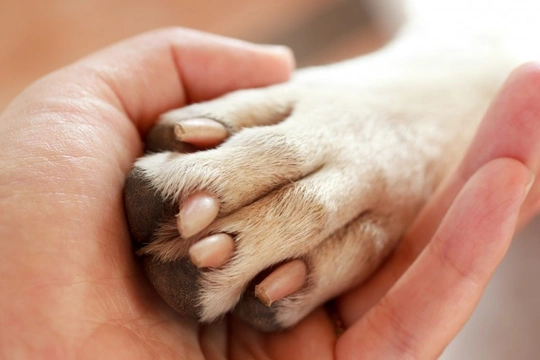
Identifying and treating paw infections in the dog
The paws of the dog are one body part that we as dog owners tend not to pay a lot of attention to, until the dog develops a limp or something else goes wrong! While certain paw problems such as cuts, embedded foreign bodies, grazes and burns from walking on hot surfaces tend to be more common paw problems than infections, infection can ultimately result from all of these things too, and such infections can be very painful for your dog, as well as leading to limping and a reluctance to place weight on the affected limb.
Paw infections can also be rather challenging to treat, as due to their location, it is not always possible to keep the dog from using their paw or walking on it, which adds another layer of complication!
In this article, we will look at paw infections in the dog in more detail, including how to spot a problem, and what to do about it. Read on to learn more.
What causes paw infections?
The paws are not one of the areas of the body that we commonly associate with picking up infections, but nevertheless, it can happen! Like other forms of infections, a variety of different things can lead to their development, including bacteria, viruses, fungus and other elements, which will often opportunistically enter the tissue of the paw via an injury, however minor. However, paw infections can also be caused by other, less obvious things, including allergies, particularly if the dog’s allergic reaction leads to them obsessively licking their paws, to the point that they weaken the tissue and lead to sore spots that are just open to potential infections.
Breeds of dog that have fine limbs and not a lot of padding on their paws, such as many sighthound breeds including the Greyhound and Italian Greyhound, are more likely to develop problems of these types than others.
Serious flea infestations and hypersensitivities to fleas can also lead to paw problems if they occur on the paw, as the itchiness, inflammation and general annoyance of the bites may lead to your dog again biting or licking their paws obsessively in order to gain some relief, which can allow infections to develop.
Any open wounds and even grazes and minor injuries can harbour bacteria or other causes of infection, as infections tend to be very opportunistic!
Dogs that have a supressed immune system, or that have any other health condition that leads to immune suppression or medications for other things that supress the immune system too also make dogs exponentially more susceptible to developing infections.
Puncture wounds, such as can be caused by a thorn becoming lodged in the paw, are a particular target for infection, as the depth of the wound makes it very hard to see and clean it out properly.
The symptoms of paw infections in dogs
It is wise to keep an eye on your dog’s paws in general, and learn what is normal for them. Checking your dog’s paws over when they get back in from a walk takes just a couple of minutes, and will help you to spot any developing problems quickly. Some of the core symptoms of paw infections to be on the lookout for include:
- Swelling across the paw in general, or on one of the toes.
- An obvious or visible graze or injury.
- A foul smell coming from the paw, due to the infection that is present.
- Pus or discharge coming from the paw.
- Limping.
- Itching or general irritation of the skin of the paws.
- Obsessive biting or licking the paws.
- Crying or being reluctant to walk on the affect paw, and reluctance to let you examine it.
- If the infection comes about as a secondary complication of an allergy, other allergic symptoms will be present too, such as a skin rash, runny eyes and possibly, other signs.
Diagnosis and treatment
A physical examination of your dog’s paw will allow your vet to identify an infection as opposed to various other possible problems, but they will usually have to take a skin scraping of the infected tissue for a proper diagnosis of what has caused the infection, and so, how to treat it.
If the infection has spread widely or is particularly bad, your vet may also wish to run some blood tests, and potentially, x-ray examination of the paw and leg as well.
How a paw infection is treated will depend on what type of fungi, bacteria or virus has caused the infection, how serious it is, and how long it has been present.
A variety of different treatments may be used, including antibiotics (for bacterial infections) and possibly, pain killers and anti-inflammatory medications if needed. Your vet will also need to thoroughly clean the paw and dress it, which may need to be repeated daily until the problem has been brought under control.
Generally, an infected paw will need to be bandaged, too both to stop the dog from chewing or licking it, and also, to keep the paw out of contact with the ground, which is of course dirty and can lead to additional problems.
Your dog may also need to wear a buster collar, to keep them from biting their bandage off too!
Generally, paw infections can be cleared with the correct treatment and careful management, but it is important not to write them off as minor or likely to resolve themselves, as they can ultimately be very painful and cause significant problems for your dog.



